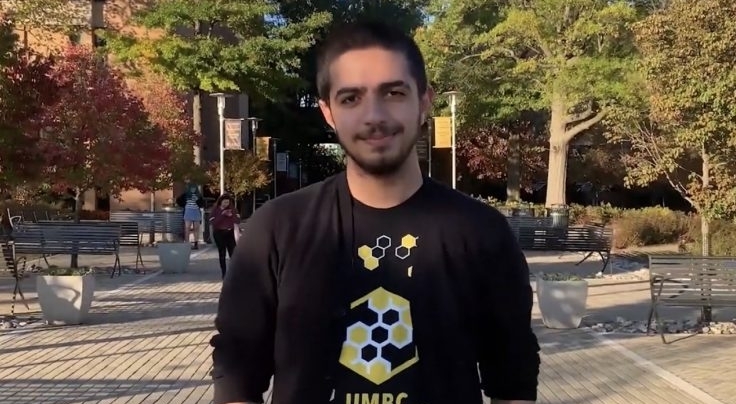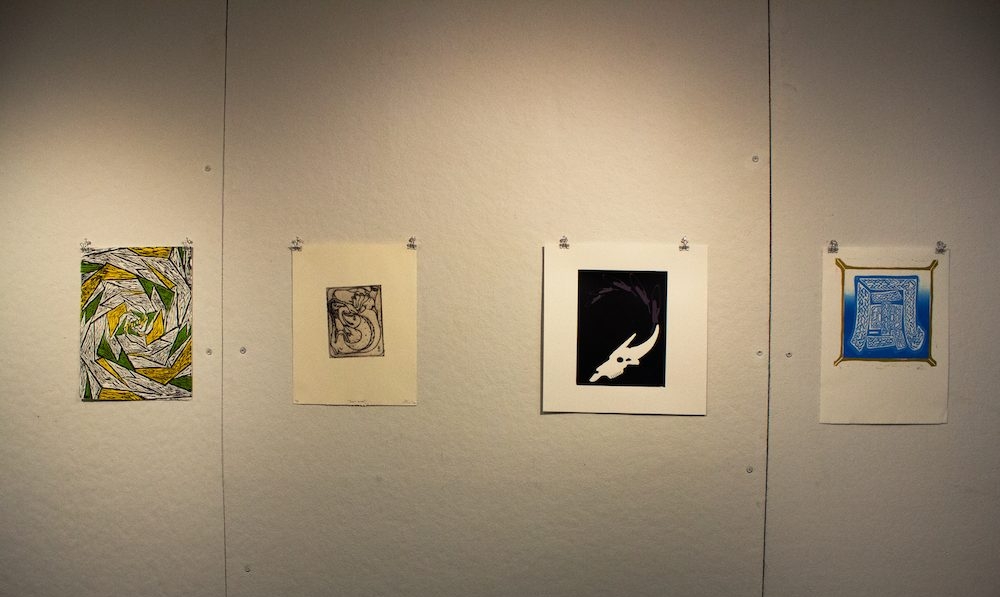A white shirt with a red hand-print hung on a clothesline, displaying the words “DO NOT TOUCH WITHOUT CONSENT.” Another, in pink, stated, “He was my best friend.” A third, red, proclaimed “It’s not my fault, but it’s still my burden.”
Every year since 2013, the Women’s Center organizes Take Back the Night, a sexual assault awareness event aimed to expose rape culture and to allow survivors and allies to share personal stories. For several years prior to 2013, UMBC students and faculty would take a bus to attend Towson University’s Take Back the Night until, one year, Jess Myers, the director of the Women’s Center, questioned why they were attending another university’s event instead of holding their own. “By not having it at UMBC, it sends a message that we don’t have sexual assault here,” Myers explained. That year, she applied for a Breaking Ground grant to fund the subsequent year’s Take Back the Night.
The first Take Back the Night marches were held across North America throughout the 70s and 80s, according to the Take Back the Night Foundation’s website. The event varies vastly depending on where and by whom it is being held; Myers notes that her conception of Take Back the Night draws from elements of Towson University’s and Colorado State’s, where she attended graduate school. She says that it is common from Take Back the Night to feature a survivor speak-out, in which survivors are invited to share their stories on either a public or confidential microphone, the latter of which guarantees that no attendees will take photos, videos or other recordings of their speech. Most Take Back the Nights also include a march.
According to Myers, one element unique to UMBC’s Take Back the Night is that, during its initial conception in 2013, the Women’s Center “incorporated Take Back the Night into a part of Greek Week, and so that’s why you’ll see a bigger Greek presence, because every year since then, Greek Week falls during Take Back the Night so that fraternities and sororities can have that be a part of their Greek Week tradition.”
Though Myers initially conceptualized the event in 2013, much of the organization falls onto the shoulders of the student staff. This year, Samiksha Manjani, a senior political science and sociology major, and Alexia Petasis, a senior interdisciplinary major, took on that role. The pair did much of the event’s logistical heavy-lifting, helping to reserve tables for the event, acquiring cardboard for the sign-making, brainstorming new ideas, communicating with other organizations that helped with the event and more.
The event itself was held in the evening on Mainstreet in the Commons, where dozens of chairs were set facing a clothesline, upon which hung various colored shirts with painted words. These t-shirts were a smaller selection of the shirts painted for the Women’s Center’s bi-annual Clothesline Project, in which survivors of sexual assault are encouraged to share their stories on t-shirts “to be viewed by others as testimony to the problem of violence against women,” according to the Clothesline Project’s website.
After emcees Autumn Cook, Morgan Mullings and Calista Ogburn made their opening remarks to the crowd — including an impassioned poem performed by Mullings — speakers came up one by one to share their experiences. Myers emphasized the importance of this part of the event, stating that, “each and every year, I meet a survivor who, for the first time, is sharing their story. And they’ve shared with me after the fact that this is the first time they felt like they could take a step in their personal healing.”
Alex Shawn, freshman gender, sexuality and women’s studies and theatre student, was pleased to see the diversity of experiences represented in the speak-out. “It was very good in demonstrating the diversity of the types of people who experience sexual violence and the ways sexual violence presents itself,” Shawn said. This is thanks in part to the efforts Myers and the event’s other organizers take to reach out to “cultural organizations or ethnic organizations,” as well as the LGBTQ Student Union, after receiving feedback in previous years that the speak-out had not been inclusive enough.
After the speak-out, students marched from the Commons, heading first past the residential halls before proceeding onto Academic Row. Protests read chants out of a blue booklet distributed to all attendees; organizers shouted “yes means yes!” through megaphones and were answered with a choir of marchers exclaiming “no means no!”
At the conclusion of the march, attendees returned to the Commons to find that space had been transformed; it was now rearranged to fit tables for the “craftivism” section of the event. This allowed participants to complete self-care activities, such as lavender sachets, coloring pages, or even to write letters to survivors.
This year’s Take Back the Night held increased significance due to how shaken the campus was by last fall’s lawsuit. Though Myers made no major changes to the event’s programming in light of this, the timing was significant to gender, sexuality and women’s studies and theatre freshman Mason Blacker, who noted that the protest held last semester was vital to him becoming aware of the situation. “One of the things campuses like to do is not tell the new people what’s going on; they just want to put the good things on the front page. So, [Take Back the Night] was good to let the students know that this is something that’s happening and not let it fall into the shadows,” he explained.
Savannah McShane (smcshan1@umbc.edu) contributed to this article.


Comments are closed.